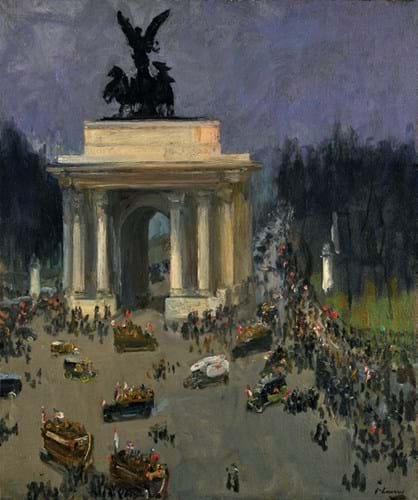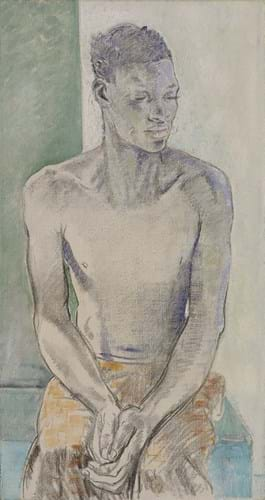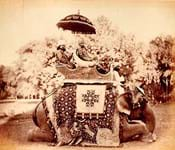
John Lavery’s (1856-1941) Armistice Day was top-seller at Sotheby’s rather lacklustre dispersal of Irish art from the collection of American businessman Brian P Burns.
Offered in the single-owner sale on November 21, the 2ft 6in x 2ft 1in (76 x 64cm) oil on canvas was acquired by the Imperial War Museums, selling on bottom estimate for £200,000.
The work is one of the few paintings, other than newspaper illustrations, produced at the time of the Armistice celebrations a century ago. Lavery set up his easel at an upstairs window in St George’s Hospital and looked across Hyde Park Corner and down Constitution Hill, capturing the scene before him.
Overall, the Burns collection was disappointing, with 59% of lots getting away to total £2.63m – below hopes of £3m-4.5m. In hindsight, offering the collection among eight other London sales containing Mod Brit pictures in the same week appears to have diluted its impact.
Marketing dream
By contrast, Christie’s sale of the contents of Mark Birley’s famous Mayfair nightclub Annabel’s, offered the day before in King Street, was a sell-out. Given the full marketing treatment by Christie’s, it totalled a bumper £3.2m and produced the kind of determined bidding one might expect from a sale of this nature.
A stand-out First World War entry here was William Nicholson’s (1872-1949)The Cenotaph, which he painted in the early hours before the Peace Procession took place on July 19, 1919. Acquired in 1990 by Birley (who had a good eye for Mod Brits), the 16 x 12¾in (41 x 32cm) oil on panel depicts the original wood and plaster memorial by Edwin Lutyens, before it was replaced the following year by the current memorial in Portland stone.
It sold on bottom estimate for £50,000 to dealer Robert Travers of London gallery Piano Noble. Travers told ATG he was “proud” of the purchase and described it as “a powerful symbol of what the First World War was about”.
The sale’s top lot was Glyn Philpot’s (1884-1937) arresting work Negro Sitting, a 3ft 4in x 22in (1.01m x 55cm) oil and charcoal on canvas painted in 1937 and depicting Jamaican-born Henry Thomas, Philpot’s best known and most sought-after sitter.
Painted in the final year of the artist’s life, it is one of the last of a series of portraits depicting black men.
The market for Philpot, especially such portraits, has strengthened considerably since this work had last appeared at auction in 1987, when it made £26,000. At Christie’s, it was knocked down for substantially more at £300,000, over double its top guide and achieving an artist’s record.
A new high was also set for obscure poster designer Andreas Farkas (dates unknown), whose Modiano vintage lithograph produced one of the most dramatic bidding battles of the day. Its major attraction appears to have been that it had hung by the dance floor at Annabel’s.
Estimated at £1000-1500, it was finally knocked down at £155,000 – a record price for a poster at Christie’s.















